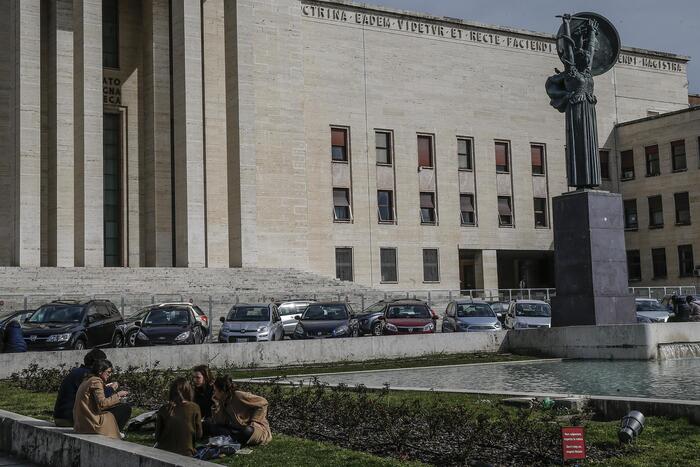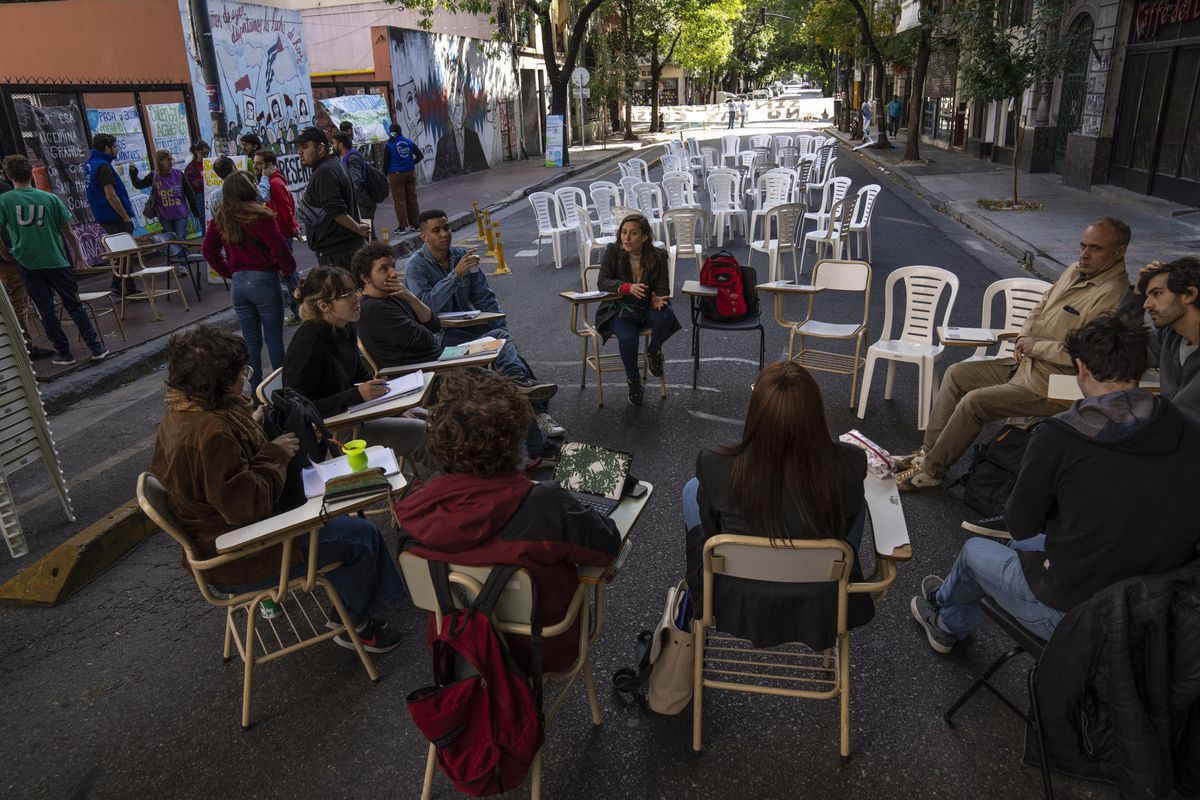Christine Musselin is a sociologist, CNRS research director at the Center de sociologie des organizations and scientific director at Sciences Po. Her latest book is
Propositions d'une researcheuse pour l'Université
(Presses de Sciences Po, 2019).
LE FIGARO. - On August 15, the latest Shanghai ranking was published. What is this classification? Why is it given such importance today?
Christine Musselin. –
This is the first international ranking that was published in 2003, which partly explains why it has become a point of reference.
Contrary to the others which were diffused thereafter, this classification always took into account the same indicators;
it is very stable over time.
This gives it great comparability from one year to the next, even if the ranking itself is highly criticized because the indicators used are very classic, they give great weight to research and little to teaching. , and that they correspond to a very particular model of institution.
Many methodological criticisms have been made of this classification;
it is not flawless but its stability makes it very robust.
How to explain that French universities are globally poorly ranked?
First, French universities are less badly ranked there now than they were at the start.
But this can be understood insofar as this ranking was originally designed by a Chinese professor to whom the [Beijing] government had entrusted the task of seeing what was the place of Chinese universities in international higher education.
It was therefore not intended to have the resonance it has today.
It was an instrument used by the Chinese government to follow the progress of world universities, especially with the American model in mind: universities in which teaching and research are very strongly integrated, where there is no research organization integrated into the functioning of universities as is the case in France,
The Chinese academic who established the Shanghai ranking took the elements that were most accessible to him, objective elements such as the number of Nobel Prizes and Fields medals.
These are also elements that exist a lot in the exact sciences but much less in the human and social sciences.
It has also taken measures of articles that greatly enhance English-language journals.
Countries where there were many publications in the national languages were thus disadvantaged.
In fact, all these criteria disadvantaged French universities.
I'm not saying that the French universities were of the same level as the American universities and that they absolutely should have appeared in the final ranking, but the way of calculating, necessarily, also had consequences on this ranking.
Christine Musselin
I'm not saying that the French universities were of the same level as the American universities and that they absolutely should have appeared in the final ranking, but the way of calculating, necessarily, also had consequences on this ranking.
What is the meaning of this global competition between universities? Were there any rankings before 2003?
Before 2003, there was no international university ranking, but American universities had already been ranked for many years.
A ranking of universities had also been developed in Germany, by the
Spiegel
with the think-tank CHE (Center for Higher Education).
They had designed a ranking at the end of the 1990s which is, in my opinion, more interesting than the Shanghai ranking because it is multi-criteria, like the international U-Multirank ranking which has since been created by the European Union: you could both to know which were the most successful universities in terms of research, but also those which best welcomed undergraduate students, or those which were best equipped.
So there were already national rankings.
The novelty with Shanghai is that it is an international ranking.
We then find the problem of national university systems that are difficult to compare, and the French university system was particularly undervalued by the Shanghai ranking.
What were the effects of these rankings?
I think we greatly overestimate the effects of these rankings.
Rankings do not have effects in themselves, but because they are used by governments, by institutions, by the people who do the rankings themselves, to try to influence transformations and reforms .
The Shanghai ranking did not fundamentally change the criticisms that were leveled at the French university and scientific system.
But it will be used to legitimize them and justify the reforms.
We can clearly see that in France, two years after the introduction of the Shanghai ranking, we are going to use the word “performance” for the university world, which was not done before;
we are going to develop tools for competition between university establishments and public instruments to accentuate this competition.
I sometimes say – in the form of a joke of course – that we should merge all the French universities and return to the Napoleonic university: we would certainly be among the world leaders in terms of scientific production.
Christine Musselin
To “perform” in these rankings, many university groups have emerged: PSL, Paris-Saclay… What is the meaning of these projects?
It is simplistic to say that the sole purpose of these groupings is to be better ranked.
It is true that by aggregating, mathematically, we are better ranked.
And I sometimes say – in the form of a joke of course – that we should merge all the French universities and return to the Napoleonic university because there we would certainly be among the world leaders in terms of scientific production.
This may partly justify groupings, but it is not enough.
This type of approach was also motivated by the fact that French universities had too strong a disciplinary logic.
From the moment such groupings were made, the department's entire approach was to have them recognized as new institutions so that they could be classified in international rankings.
It was the implementation of the 1968 law that led to the break-up of the Sorbonne and led the academics to regroup according to either disciplinary or political logics.
In Paris, the split of historians between Paris I and Paris IV mainly responded to political logics, of different conceptions of history.
Christine Musselin
How to explain this movement opposite to that experienced by the French university, and in particular in Paris, in 1970? Do we no longer value anything but “critical size” and interdisciplinarity?
The reasoning on interdisciplinarity makes me smile because many universities in the world are indeed multidisciplinary but have great difficulty in getting the different university entities to work together within them and curiously all display interdisciplinary objectives!
There was indeed a reversal compared to the 1970s, but if we look at the bursting of the Sorbonne, we must see that it was not at all what the political power of the time wanted.
If we reread the law of 1968, which was at the origin of the recreation of universities as we know them today in France, the will of Edgar Faure, it was to create on the contrary multidisciplinary universities.
It is the implementation of the law that brought about this fragmentation and led the academics to regroup according to either disciplinary or political logics.
In Paris, the split of historians between Paris I and Paris IV mainly responded to political logics, of different conceptions of history.
VS'
Now, in fact, the question of critical size is often invoked, without anyone really defining it.
But the idea is as follows: if you're big, you're visible, which in my view corresponds to an error in the interpretation of critical size.
If you look at the top ranked universities in the world, they are not necessarily the biggest in terms of students.
However, we have recreated in France very large universities compared to the universities which are the best ranked in the world.
We should rather look at the number of teacher-researchers, or the ratio of teacher-researchers per student;
there we are often very behind many countries, including in the recently merged French universities.












/cloudfront-eu-central-1.images.arcpublishing.com/prisa/KMEYMJKESBAZBE4MRBAM4TGHIQ.jpg)


